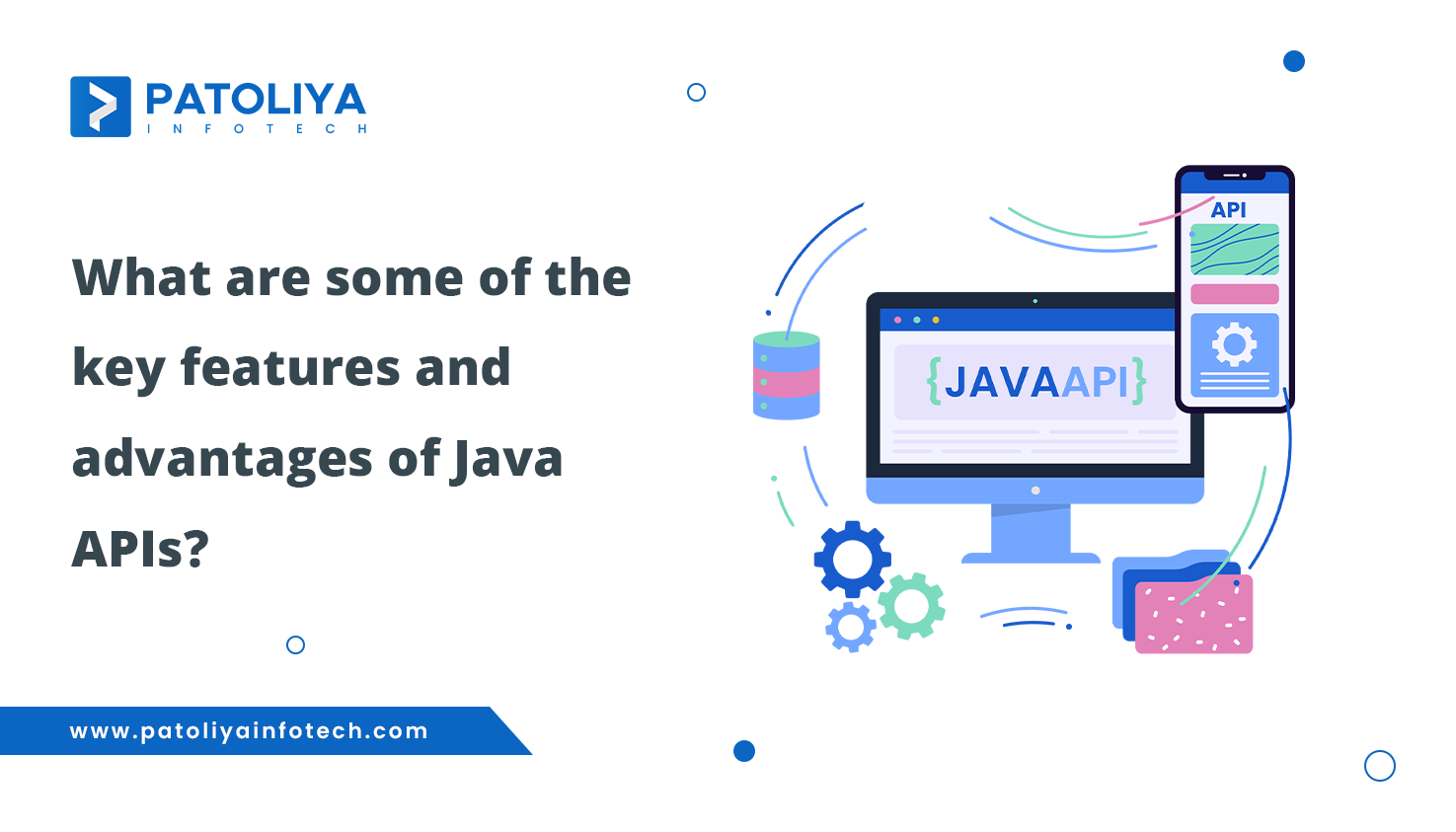What is Node js? Why Node js is the Future of Back-End Development

Table of Contents
In the bustling landscape of modern technology, one platform stands tall, etching its name as the cornerstone of innovation: Node.js. Picture a digital metropolis where businesses weave their success stories, and at its heart lies Node.js, a technological marvel embraced by a multitude of enterprises. Its allure? Unmatched.
This isn't just another tech fad; it's a revolution. Node.js isn't merely a backend tech stack; it's the pulsating nerve center powering the internet's giants. Imagine Netflix delivering your favorite shows, PayPal securing transactions, and Twitter orchestrating tweets – all fueled by the relentless prowess of Node.js.
Step into the realm of developers, where choices reign supreme. Here, Node.js isn't just a choice; it's the resounding chorus of preference. Stack Overflow's 2022 Developer Survey echoes this sentiment, heralding Node.js as the reigning monarch of web technology. A staggering 47% of developers, the architects of our digital world, have pledged their allegiance to this powerhouse.
What is Node js and How it Works
Node.js presents an intriguing connection between frontend and backend technologies in terms of application stacks. Node.js enhances JavaScript's functionality so that it may run on the backend, server-side element of a web application architecture as well as for serverless architecture. JavaScript is usually a front-end, client-side web scripting language.
Npm is the name of Node.js's package manager. Its function is to act as an index of libraries created by the Node.js developer community that is simple to share and import into other projects. These packages offer practical solutions to frequent problems in code and functions, making it easier to construct new applications and enhance existing ones.
Core Features of Node.js
Node.js is great at handling multiple requests and providing quick responses. Additionally, this technology has the following features that make it a good choice for web app development:
- Asynchronous is a primary Node.js module offering an API to track asynchronous resources, or objects having a callback, in a Node application. Because of this, Node.js is incredibly scalable and well-suited for creating real-time applications like chat programs, online gaming environments, and team-building tools.
- Node.js is based on the V8 JavaScript engine, which is renowned for its quick performance and optimized code execution. JavaScript Runtime Environment.
- NPM (Node Package Manager) is the tool used to publish Node. js-based open-source projects. It also guarantees package installation, dependency management, and version control. The extensive repository of reusable code offered by NPM makes it simple for developers to include it in their apps, saving them the time and effort of having to create intricate functions from scratch.
- Single-threaded event loop architecture enables handling a large number of concurrent connections efficiently. Multiple tasks are processed, prioritized, and carried out asynchronously by the system.
- A diagnostic overview of development and testing to save data for problem identification is included in the NODE_Report. It has memory statistics, resource utilization, native stack, and JavaScript traces, among other things.
- The environment variable, which is a dependency that executes code, can be implemented using command lines because of NODE_OPTION.
Node.js Module Types
Node.js includes three types of modules:
- Core Modules
- Local Modules
- Third-Party Modules
1. Node.js Core Modules
Node.js is a lightweight framework. The basic minimal Node.js features are included in the core modules. These essential modules are built into the binary distribution of Node.js and are loaded upon startup. However, to use it in your application, you must first import the core module.
Several fundamental modules come with Node.js that offer different functionalities, like path manipulation, HTTP/HTTPS servers, file system operations, and more. Without the requirement for external installation, these modules can be imported directly into your Node.js application.
2. Node.js Local Modules
In your Node.js application, local modules are those that you have created locally. These modules contain various program capabilities in independent files and folders. Additionally, you can package it and make it available via NPM for usage by the Node.js community. For instance, you can write a module for connecting to MongoDB and retrieving data, which can then be utilized across your application.
The require() function can be used to import local modules into other areas of your application once they have been developed in separate files. As a result, your codebase can be more organized and problems can be separated.
3. Third-Party Modules
These Node.js community-created modules are accessible through the Node Package Manager (NPM). You may install, manage, and use third-party modules in your Node.js application using NPM, a package manager. These modules offer many different functionalities, including express to develop web applications, socket.io for real-time communication, lodash for utility functions, and more.
Node.js Pioneering Innovations in Modern Development
Server-Side Rendering (SSR) and Next.js Integration
Node js, when used alongside frameworks like Next.js, brings a powerful feature called Server-Side Rendering (SSR) to web development. SSR is like having a pre-made package ready to be opened. It involves creating web pages on the server side before they reach a user's web browser. Imagine a team of experts arranging everything neatly in a box before delivering it to your doorstep.
SSR has a few key advantages. Firstly, it significantly speeds up web page loading times. It's as if your web pages are already half-loaded by the time they reach a user's device, so they appear almost instantly. Secondly, SSR is great for search engine optimization (SEO). It makes it easier for search engines like Google to understand and index your website content effectively. It's like organizing your book neatly so others can easily find what they're looking for.
Next.js, which is built on top of Node.js, simplifies the implementation of SSR. It's like having a user-friendly tool that helps you wrap gifts quickly and beautifully. Developers find Next.js helpful because it streamlines the process of creating dynamic and optimized web applications. It's like having an assistant who handles the tricky parts of preparing your package, leaving you with more time to focus on making it special.
Node.js and Next.js working together to enable SSR is like having a team that prepares and packages your website content in an organized and efficient manner before delivering it to your users. This technique not only makes your web pages load faster but also ensures that search engines can better understand and showcase your content, making your website more accessible and user-friendly.
GraphQL and Apollo Server Integration
Node.js pairs seamlessly with GraphQL, a specialized language designed for managing APIs. Think of GraphQL as a personalized shopper - it allows clients (like web or mobile apps) to ask for exactly the data they need, akin to ordering precisely the items required from a store without extra baggage. This tailored approach minimizes unnecessary data retrieval, preventing both overloading with excess data (over-fetching) and insufficient data retrieval (under-fetching).
The combination of Node.js and GraphQL offers several advantages. Firstly, it provides developers with a more efficient and flexible means to manage data interactions. It's akin to having a streamlined and custom-fit toolset that lets developers curate data exchanges precisely as needed. Secondly, GraphQL’s ability to specify data requirements empowers applications to perform better, as they only retrieve the essential information required, enhancing performance and user experience.
When Node.js collaborates with Apollo Server, a dedicated tool for implementing GraphQL servers, the partnership becomes even more robust. Apollo Server acts as a skilled coordinator, assisting Node.js in efficiently managing GraphQL-based APIs. It's akin to having a guide that helps navigate through the complexities of data management, ensuring the construction of strong and structured APIs that comply with predefined schemas.
Node.js joining forces with GraphQL, complemented by Apollo Server, provides developers with a more refined, efficient, and sophisticated method to handle data exchanges. This collaboration ensures that applications fetch precisely the needed information, streamlining performance and optimizing data interactions without unnecessary complexity or excess baggage.
Deno: A Modern Alternative to Node.js
While Node.js remains a prevalent choice, Deno emerges as a compelling alternative. Think of it as a newcomer in the neighborhood that's catching attention for its unique offerings.
Deno, created by the same mind behind Node.js, seeks to tackle certain limitations and security issues present in Node.js. It's like an updated version that learned from the past, striving to fix areas where Node.js fell short. Deno prioritizes security and aims to simplify certain aspects that are complex in Node.js.
One of Deno's standout features is its simplified module management. It's like having a more organized toolbox that's easier to handle, reducing complexities faced in managing modules, unlike in Node.js. Moreover, Deno incorporates built-in security features, ensuring a safer environment for developers.
Unlike Node.js, Deno eliminates the need for a separate package manager like npm. It's akin to having an all-in-one tool that doesn't require additional add-ons for specific tasks, streamlining the development process.
Although Deno is still in its early stages of development, its potential and the growing community backing it make it an intriguing contender in the JavaScript runtime ecosystem. It's like a rising star in the sky, garnering attention for its promise and the possibilities it holds.
Microservices and Kubernetes Orchestration
Node.js serves a crucial function in the shift toward microservices architecture. Think of microservices as breaking down a big task into smaller, more manageable parts. Node.js excels at this, helping to split monolithic (large and complex) applications into independent, smaller services. It's akin to turning a massive project into smaller, more manageable pieces, making everything easier to handle.
When Node.js teams up with Kubernetes, a powerful tool for managing containers (the parts of software where applications run), the partnership becomes a game-changer. Kubernetes acts like a skilled manager, overseeing and coordinating these smaller services created by Node.js. It's like having a supervisor who ensures all the smaller tasks work together smoothly.
Node.js, coupled with Kubernetes, simplifies the deployment, scaling, and management of these microservices-based applications. Imagine these smaller services as a set of Lego blocks - Node.js helps build them, while Kubernetes ensures they fit together seamlessly. This partnership automates various operational tasks, ensuring these services can work together efficiently and flexibly.
Node.js and Kubernetes form a powerful duo for building and managing distributed systems made of these smaller, independent services. They combine Node.js's knack for breaking things down into manageable parts with Kubernetes' ability to keep everything organized and running smoothly. It's like having a team that can handle complex projects by dividing tasks and ensuring they all work together cohesively.
WebAssembly (Wasm) and Node.js Integration
WebAssembly (Wasm) joining forces with Node.js opens a remarkable door for executing code written in languages other than JavaScript, such as C, C++, and Rust, within Node.js applications. Imagine Wasm as a multilingual translator for Node.js, enabling it to understand and use code from different programming languages, just like understanding different languages in a conversation.
Wasm operates as a binary instruction format, which essentially means it provides a common language understood by both Wasm-compatible browsers and runtimes, like Node.js. This integration allows Node.js to execute complex computations and tasks in a more efficient and high-performing manner. It's like giving Node.js access to a powerful toolkit that boosts its capabilities, enhancing speed and performance.
Developers harness this capability to optimize critical parts of their applications. It's akin to having a specialized tool that helps in refining and fine-tuning essential aspects of an application. By utilizing libraries originally written in other languages within Node.js projects, developers can fine-tune performance-critical sections, ensuring they run faster and more efficiently.
The fusion of WebAssembly with Node.js empowers developers to optimize and enhance the performance of Node.js applications by integrating components written in languages beyond JavaScript. It's like adding turbocharged engines to certain parts of a vehicle, boosting their speed and efficiency, and ultimately enhancing the overall functionality of Node.js applications.
Node js in IoT and Edge Computing
Node.js extends its reach beyond typical web applications and makes its mark in the realms of the Internet of Things (IoT) and edge computing. Imagine Node.js as a versatile tool that can be applied in various scenarios beyond regular website development.
One of Node.js's key strengths is its lightweight nature, making it a suitable choice for resource-constrained IoT devices. It's like having a tool that doesn’t take up much space or energy, making it feasible to run efficiently on devices with limited resources, like smart thermostats or wearable gadgets.
Node.js's event-driven architecture enables it to handle real-time data streams effectively. It's akin to having a master conductor managing a symphony - Node.js efficiently manages incoming data, ensuring it's processed swiftly and accurately, critical for applications requiring real-time updates or responses.
Node.js shines in edge computing, where processing happens closer to where data is generated or required. Its ability to provide quick responses without delays (low-latency processing) makes it an excellent fit for edge servers or systems that demand rapid data analysis or immediate actions.
Node.js's adaptability, combined with its lightweight footprint and capability to handle real-time data, contributes significantly to the growth of interconnected smart devices and edge computing solutions. Its versatility helps power a network of smart devices and aids in the development of efficient edge computing systems.
Start Your Node.js Web Development Project With Us
Node.js stands as a transformative force in the realm of technology, capturing the attention of major players like Netflix and Twitter, and becoming the backbone of backend frameworks. It's not just a preference; it's a statement, acknowledged by a staggering 47% of developers. This framework seamlessly transitions JavaScript from frontend to backend, marking a pivotal moment in its evolution and setting the standard for innovation.
Beyond being a mere choice, Node.js embodies the future of tech. It pioneers revolutionary concepts such as SSR and introduces disruptive platforms like Deno, showcasing its adaptability and pioneering spirit. Its far-reaching impact extends to the domains of IoT, edge computing, and beyond, shaping and defining the contours of the modern technological landscape.
Amidst the ever-evolving technology sector, Node.js remains an unwavering force, consistently adapting and exerting its influence. Its enduring presence signifies not just a trend but a fundamental shift, guiding the trajectory of technological evolution. In this fast-paced digital era, Node.js serves as a beacon of transformation, leading the way toward continued innovation and advancement.
For those seeking guidance or assistance in leveraging Node.js for their projects, our team stands ready to provide specialized support and help choose the ideal tech stack.



